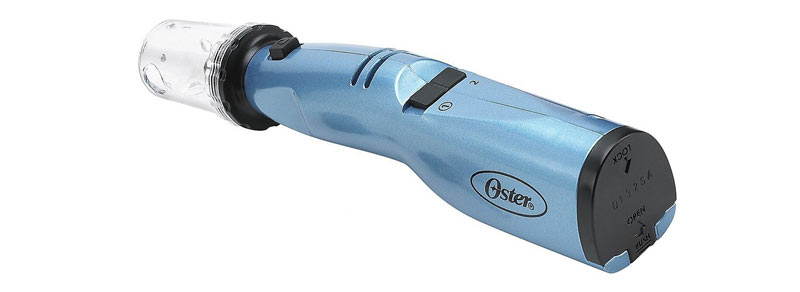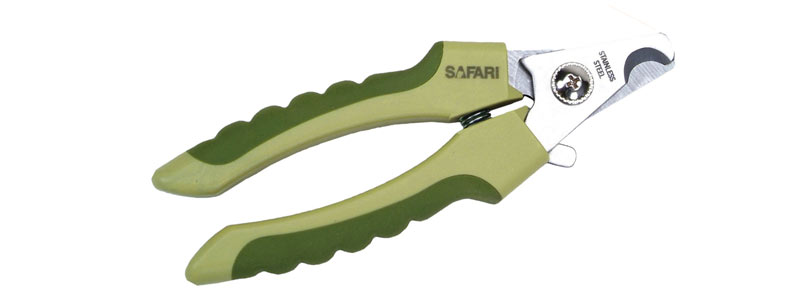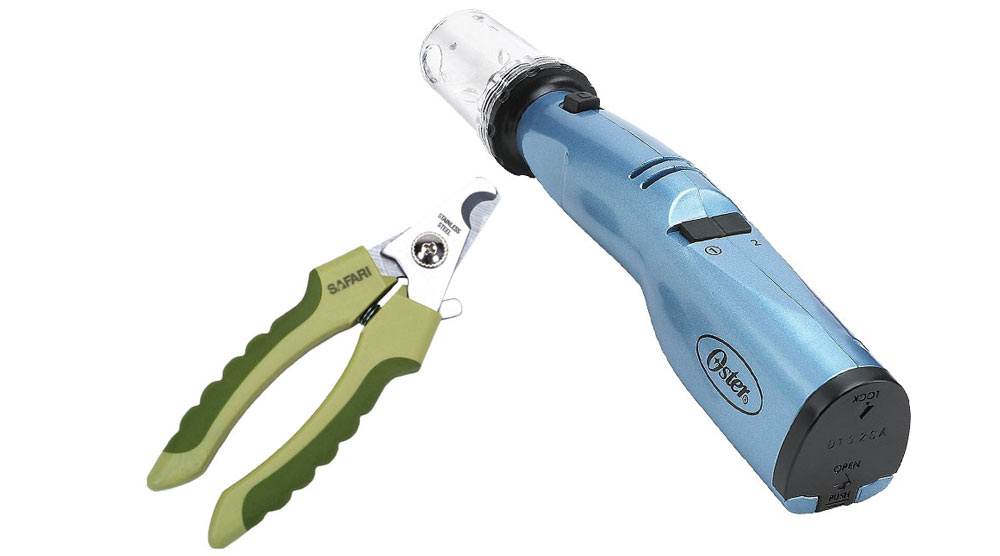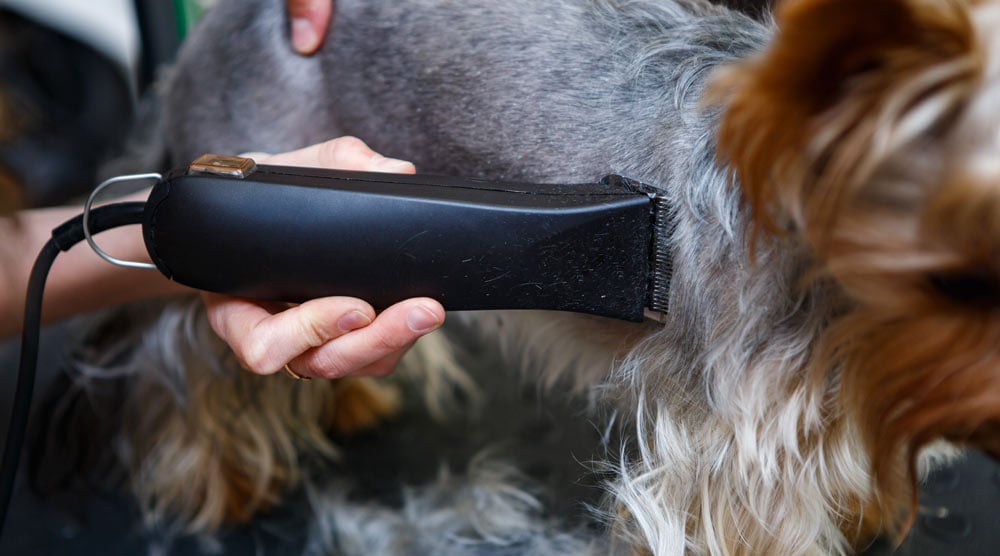If you’re not sure whether to use a nail grinder or clippers to trim your dog’s nails, our guide below outlines the advantages and disadvantages of both options.
The cost of paying a groomer to trim your dog’s nails can really add up. But many dog owners are scared of using nail clippers at home for fear of making a painful mistake.
This is why dog nail grinders are becoming popular. While they aren’t always the best choice, filing tends to be easier and less stressful than clipping.
If you’re not sure whether to invest in a nail grinder or stick with traditional nail clippers, we hope this article helps you decide.
Contents
Pros and Cons of Dog Nail Grinders

Many dog owners use nail clippers, but they aren’t the only option for nail grooming. In fact, a pet nail grinder has several advantages.
Advantages
- Gradual grinding and more control. Grinders gradually file the nail rather than cutting it. You have more control over how much of the nail you grind, which reduces the chance of hitting the quick (the sensitive nail blood vessel).
- Smoother finish. Clippers can sometimes leave ragged or sharp edges. Grinders create a smooth edge.
- Useful for dogs who fear clippers. If your dog has had a bad experience with clippers, or they don’t like the pressure on the nail, then they may be more accepting of a grinder. You still need to desensitize your dog to the noise and vibrations though.
- Easy to use on thick nails. Sometimes clippers can cause nails to split. This is more common with thick nails, or if the clippers aren’t strong enough. You can avoid these potential problems using a grinder.
Disadvantages
- Some dogs don’t like the noise or vibrations. Grinders are noisier than clippers. They also cause a slight vibration when pressed against the nail. This can make some dogs feel uncomfortable – especially if they are nervous or anxious. However, by introducing the grinder through a process of desensitization, you can often get them to accept it.
- Nail dust. Grinders create a fair bit of dust – especially if you have a large dog with thick nails. Some grinders have a protective casing that gathers dust.
- Still need to avoid hitting the quick. Using a grinder isn’t foolproof. It’s still possible to file down too far and hit the quick. Make sure you don’t get overconfident and, if in doubt, use the slower speed setting.
- Heat. The longer you use a grinder, the more heat is generated. You may have to trim the nails in short sessions if they are long or thick, to ensure you don’t burn your dog’s paws. Using a grinder on a high speed setting causes it to heat up faster.
- Long hair can get wound around the bands. Long paw hair can get wrapped around the rotating band of the grinder. You’ll need to cut this out, which can cause discomfort and stress. Keep paw hair trimmed or pulled back – especially for long-haired breeds.

Which is the Best Dog Nail Grinder?
If you’re in a hurry, here are our top picks:
- Dremel 7300-PT – An excellent cordless grinder that’s designed specifically for pet nails. It has a rechargeable battery, is simple to use, and powerful enough to grind almost any nail.
- Oster Gentle Paws Grinder – Not as powerful as the Dremel, but comes with a nail guard and provides decent value.
Pros and Cons of Dog Nail Clippers

Nail clippers come in two different styles: guillotine and scissors.
Guillotine clippers have a hole for your dog’s nails. You then press down to force the blade through.
This style is great if you have mobility issues with your hands, such as arthritis. The design makes it easier to create the pressure required.
Scissor clippers, however, are stronger and generate more pressure. This makes them a better choice for large dogs with thicker nails.
Here are some advantages and disadvantages of dog nail clippers.
Advantages
- Fast. Because clippers require one or two snips, rather than a gradual filing down, they are quicker for cutting your pet’s nails. This is useful if you have a fidgety or nervy dog.
- Minimal noise and no vibration. While clippers still create a snip sound when cutting the nail, your dog isn’t subjected to continual noise or vibrations. You may have to spend less time desensitizing them to the clipping process, especially if you have a sound-sensitive dog.
- Cheaper. It’s still important to invest in a good quality set of clippers, but they are less expensive than a grinder.
- Don’t need battery or power cord. Clippers are more convenient and portable, as they aren’t reliant on batteries or a power cord. You may also save money on replacing batteries.
- Easier to remove a broken piece of nail. If your dog has snagged their nail, leaving an awkward piece remaining, it’s much easier to remove this with clippers. If they have a serious nail injury, you should always take them to the vet for assessment.
Disadvantages
- Can be difficult to use on thick nails. If you have a large breed with thick nails, getting the clippers to cut through can be a challenge – even using scissor-type trimmers.
- More likely to hit the quick. If you misjudge where to cut, or your dog moves, it’s easy to hit the quick. This is especially true for dogs with dark nails, which make it tougher to see where the blood vessel begins. Hitting the quick isn’t a medical disaster, but it can bleed profusely and be painful for your dog. Aside from the immediate pain, this experience can cause an aversion to future nail clipping.
- Can cause jagged or split nails. Clipping doesn’t round off the edge like a grinder. This can leave ragged edges, which are more likely to get caught or cause discomfort. It’s also easier to split the nail, especially if you clip it at the wrong angle.
- Can cause painful pressure. Clippers need to press down with strong pressure. This can cause an uncomfortable pressure or pinching. Clipping is often more painful for dogs with thick nails or if you’re cutting at the wrong angle.

Tips for Using Clippers
Once your dog is desensitized to being touched with clippers (lots of treats required!), it’s time to cut their nails.
Always make sure you lift away hair, so you have clear sight of the full nail. If you can’t see the quick or you’re nervous about your accuracy levels, only take the tip off. A clipper guard can be helpful if you need a little extra confidence.
Clip the nail straight across. Only take off the tip and don’t be tempted to go past the curve. Be extra careful with black nails, as it’s harder to see the quick.
If the quick is long, don’t worry. Regular tip clipping will train the quick to shorten over time.
Don’t forget about the dewclaw, further up the paw. This is likely to grow more quickly, as it doesn’t get filed down on rough surfaces when walking.
Nail Clipping Vs Grinding – Which Should You Choose for Your Dog?
In my opinion, a dog nail grinder is the better grooming tool for most non-professionals. Grinders are especially useful if you’re nervous about clipping, as you don’t need to be as precise and there is less chance of hitting the quick.
My top pick for a nail grinder is the Dremel 7300-PT. It’s specifically designed for dogs and makes quick work of even thick nails.
If you have a sound-sensitive or anxious dog, then nail clippers may not be as scary. Regardless of which you use, however, it’s always a good idea to spend time building up your dog’s positive associations with the tool.
If you’re too nervous or looking for extra guidance, you can always take your dog to the vet or the groomers to have their nails clipped. Just make sure you pick an expert that will be gentle and patient with your dog.
Have you used both clippers and a nail grinder? What was your dog’s preference? Let us know using the comments form below.


